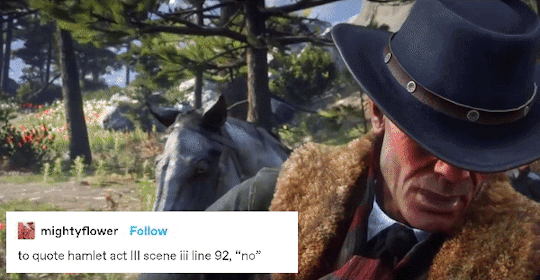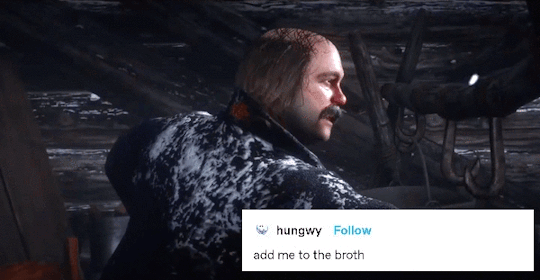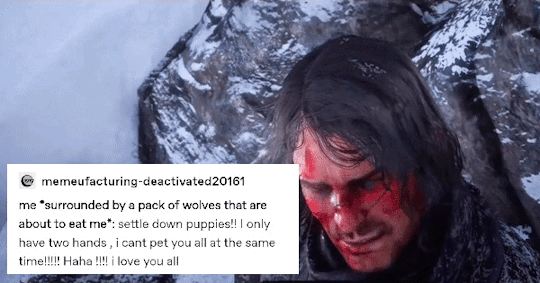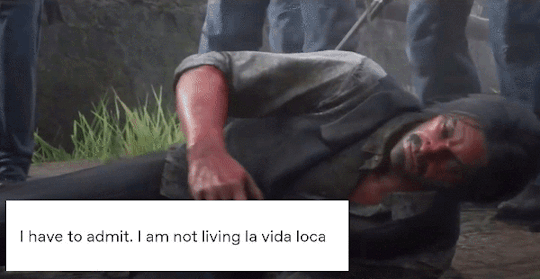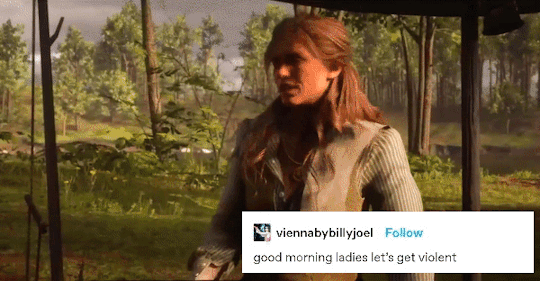Text
Bro, the Info-Dump Dialogue
“What about it?” Fiction continues washing the dishes.
“It sucks,” I say. “Sucks to high heaven.” I flip a few pages of the book. “See this?” I point at the page. “That’s all dialogue.”
Fiction glances at the book and makes a small affirmative noise. Then he continues washing dishes.
I gesture helplessly. “All this is just this one character going on and on and on about how the world works. If I wanted to hear someone drone about mechanics I’d actually listen to my biology lectures.”
“Mhm.” Fiction is unimpressed.
“I mean, it’s just pure, unsubtle info dumping! It’s like five pages of just explaining the world–are you listening.”
Fiction turns off the water. “What was that?” he asks.
“Info dumping! And the super-awkward dialogue tags too I just–” I shudder. “It’s as if the author thinks I’m too dumb to figure this stuff out. Bro, I can figure out that these worlds are connected thank-you-very-effing-much.” I flick the pages in disbelief. Then I stop. “I love Norse mythology, so I should enjoy this,” I say, no longer talking to Fiction, who is of course a fictional character. “But it just goes on, and on, and on. I’m here for the protagonist’s problem, not for the explanation of that problem.”
I’m here for the problem, not the explanation of the problem.
I drop the book and run to my writing desk. I find the printed copy of WIP 3 and flick through it until I find the scene that has been giving me trouble.
“I’m here for the problem, not the explanation of the problem,” I repeat to myself as I draw a giant X over the scene. “I’m here for the problem, not the explanation of the problem.”
48 notes
·
View notes
Text
#208: Write Like a Painter

The initial sketches that an artist does in preparation for a painting look almost nothing like the finished product. For writers, the lines are a lot more blurry. A draft — the first or the very last — is always just a bunch of words on paper.
When you’re reading a story, you may imagine the writer sitting at his desk, writing those beautiful sentences down exactly as you see them. But that rarely ever happens. What the author wrote down in the first draft has been rewritten and edited many times before publication. In fact, you probably wouldn’t even recognise the story by reading a passage from the first draft.
Writers and painters have a lot in common when it comes to the creative process. Here’s what you can learn about writing by watching painters at work.
Working in Layers
Most painters start with a rough sketch. They erase it so it’s barely visible and do another one on top. Then they start blocking in the colours and adding more and more detail.
The initial sketches guide the artist’s hand later on when she’s adding new layers on top. Without the sketches, it would be very hard for the artist to create the image. Even though you won’t see it in the finished work, the sketch is an essential part of the process.
Think of the first draft as the initial sketch — something to guide you when shaping the story to its final form. By the time you’re finished, you may have removed, replaced or rearranged every single word. That doesn’t make the first draft any less valuable. The finished story wouldn’t exist without it.
The Importance of the First Draft
As I said, the first draft is critically important, but it also isn’t. The details aren’t important at all. A lot of the polishing and editing writers do while working on the first draft can be a waste of time. Often, you’ll have to cut entire chapters.
A painter won’t spend hours adding detailed shading to a sketch only to cover it with a layer of paint. That’d be ridiculous! As a writer, it’s much easier to fall into the same trap.
Painters use the initial sketches to set the perspective of the image and find the right shapes. Writing is much the same — the important things in the first draft are the broad strokes that will define the shape of the narrative. You want to get your main characters in and hit all the crucial plot points. But there’s no need to agonise about what does your protagonist order at Starbucks in scene 12.
That’s not to say that the details don’t matter. They can make or break a story, but they aren’t necessary when you’re working on the first draft.
It’s ok to leave things unfinished or keep writing even if you can’t decide or simply don’t know something. Skip it, wing it, do whatever it takes so you can keep going. The first draft just has to exist. You can fix anything later.
Many writers (myself included) spend way more time and energy on the first draft than is necessary. I’m not entirely sure why, to be honest. Perhaps our brain gets somehow confused because the first draft looks a lot like the final draft. They’re both just words on a page, and yet, they couldn’t be more different.
About the Author
Hi, I’m Radek 👋. I’m a writer, software engineer and the founder of Writing Analytics — an editor and writing tracker designed to help you beat writer’s block and create a sustainable writing routine.
I publish a post like this every week. Want to know when the next one comes out? Sign up for my email list below to get it right in your inbox.
SUBSCRIBE
(I won’t spam you or pass your email to a third party. You can unsubscribe at any time.)
Past Editions
#207: On Being Stuck, August 2021
#206: 4 Reasons to Keep a Journal, August 2021
#205: It’s just Writing, July 2021
#204: What Will Your Story Look Like?, July 2021
#203: It Will Take Longer Than You Think, July 2021
272 notes
·
View notes
Text
plot feeling a little empty in the middle? here’s some food for thought.
actions have consequences. things that your characters do inevitably can affect other people around them. what might they have done in the past that could come back and serve as an obstacle? or, maybe, what could they do now that could possibly raise the stakes just a little bit more?
subplots! be mindful of the subplots you’re adding - but sometimes it might be a good idea to include one if your plot is feeling a little bit empty. not only can it tie back into the overarching struggle, but it could also serve as a way to explore one of your characters or points further.
character exploration. get to know your characters a little bit better! let your readers find out something new. connecting and understanding the people within your story is important if you want your readers to grow attached to them.
world exploration. similar to the previous point, with the addition of creating a greater sense of familiarity of the circumstances that your story is taking place in. remember that nobody else knows the world of your wip as well as you do - illustrate it even further so everyone else can grasp it even better.
let your characters bond! maybe there’s a lull in the plot. if your characters have the chance to take a breather and get to know the people around them, let them! it might help flesh out or even realistically advance their relationships with each other.
5K notes
·
View notes
Text
Speak no evil

See so evil

Walk no evil??

115 notes
·
View notes
Text

its only been a week but i miss them So much
//had to repost because i messed something up, please rb this version instead!!
3K notes
·
View notes
Text
Clem: AJ, you have to kill me
AJ: I've got a better idea
AJ:

714 notes
·
View notes
Text
Personally, I think the ending for the final season was great. After playing every episode of every season I always felt like I'm missing something, and I just feel sad, and burt into tears when I think of the game. But now I just feel oddly calm. I still feel a little sad about not being able to see what becomes of the group, but I'm happy that I got to experience all of this. Thanks telltale
17 notes
·
View notes
Text
Now what?
The final season is over. That was the last of it. I can't believe it. This game series has been a big part of my life, and now it's gone. What do I do?
11 notes
·
View notes
Text
Were all too busy trying to regain our lost strength and soul for episode 4
Is seems like the Twdg fandom is dead or am I just dead
52 notes
·
View notes
Text
Episode 3 got me like

29 notes
·
View notes

